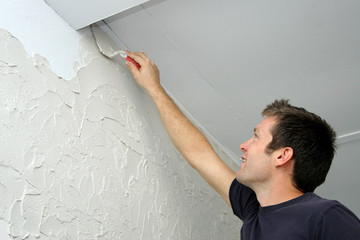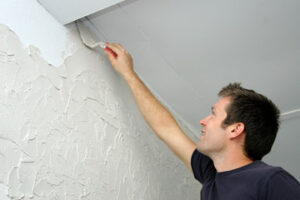Commercial cleaning is a different proposition from residential cleaning and requires specialized chemicals, equipment, and staff. This is why commercial cleaning can be more expensive.
When you use a cleaning service that has been professionally trained, you can rest assured that your facility is being cleaned to the highest standard. Professional training programs teach cleaning staff how to clean efficiently, correctly, and safely. They also learn customer service skills so that they can build a good relationship with their clients.
In addition, professional cleaning companies are well-versed in a variety of cleaning procedures and techniques for different surfaces, such as carpets, floors, and windows. They also learn about safety procedures and how to handle chemicals. A professional cleaning company will use this knowledge to improve the quality of your facility and make it look a lot better than an amateur cleaner would.
A commercial cleaning business will also have a rigorous hiring process. They will run background checks on all potential employees to ensure that they don’t have any criminal records. They will also do a thorough interview to get a better understanding of the applicant’s strengths and experience. Once they have found the best candidates, they will train them using techniques like simulation and role-playing. This will help them become more efficient and effective in their work, and it will also increase the likelihood of them doing a great job for your clients.
During the training period, it is important to focus on teaching your cleaning staff how to properly care for each area of your facility. This will keep your clients happy and ensure that their facilities are maintained in the best possible condition. You should also provide your cleaning staff with ongoing training so that they can continue to learn and grow. This will allow them to do a more thorough job of cleaning and will also prevent them from becoming bored with the routine.
It is also important to remember that your cleaning staff will be in your clients’ homes when they are not there. This is why it is important to create a strong working relationship with them. You can do this by introducing your cleaning staff to each of your clients so that they know who is coming into their home and what they will be doing. You should also encourage your staff to use positive reinforcement when they do a good job. This will make them feel valued and appreciated, and it will show your clients that you value their business.
You don’t have to add cleaning to your staff’s tasks.
Professionals know which cleaning products are best for different surfaces and how to use them in the most effective way to keep things germ-free. This saves you time and money in the long run because it prevents small maintenance issues from getting worse over time. It also prevents you from having to stay after hours and complete the work yourself. It also prevents you from having to worry about putting the cleaning tasks on your staff’s agenda, which can have a negative effect on employee morale and may cause some employees to feel overlooked or undervalued.
A professional commercial cleaner will clean your business after everyone has gone home for the day and it’s quiet. This means they will take out trash, clean floors, sanitize bathrooms and eating spaces, and perform any other services you require. They will also take care of all the dusting and vacuuming, so you don’t have to do those yourself. This is much easier than having your staff do the cleaning, and it allows you to focus on your core competencies while ensuring that the building is always clean and ready for visitors.
Cleaning companies are often able to offer better rates than your in-house cleaning team because they can do the work more efficiently and effectively. This means that you will have a lower cost per hour, and you won’t have to worry about additional staffing costs or having to pay overtime.
Using a commercial cleaning company is great for employee morale as well. Many people spend the majority of their waking life at work, and they want to be in an environment that is comfortable and clean. A cluttered and dirty workplace is distracting and can cause employees to lose concentration and productivity.
A clean workplace is also more welcoming to potential customers and clients, as it conveys a sense of stability and professionalism. Keeping your premises clean will also help you maintain a positive image and make you stand out from your competitors, who haven’t invested in their cleaning processes. Investing in regular commercial cleaning will also reduce overall administrative costs by reducing the number of sick days and workers’ compensation claims.
They have all the right equipment.
Commercial cleaning companies have a wide variety of equipment that they will bring with them to each job. Depending on the scope of the work, this could include industrial carpet cleaners, water-fed poles for reaching high windows, and even power washers for exterior surfaces like sidewalks and parking lots. These tools are far more powerful than what is needed for residential cleaning and will ensure that the facility is thoroughly cleaned.
A professional cleaning company knows how to use this equipment properly and will have the appropriate chemicals to clean different types of flooring and surfaces. They will also know how to clean and disinfect areas that are frequently used by the public, such as restrooms and break rooms. This will reduce the spread of germs and keep people safe from harmful pathogens.
Many commercial cleaning businesses will charge a flat rate for their services or will price by the square foot of the space that needs to be cleaned. This is because they need to consider their overhead costs when calculating their pricing as well as how much labor will be required for each building. They may also need to purchase specialized equipment such as floor waxers, which would require training for their employees before they could be utilized.
In addition to basic cleaning tasks, some commercial cleaning companies will offer additional janitorial services such as waste removal, recycling, and specialty cleaning. This helps improve the overall health and safety of a business, which can improve productivity and employee morale.
While residential clients will often watch a housekeeper as they go about their duties, commercial cleaning clients are less likely to do so. This is because the focus of commercial cleaning is not on cleaning for appearances but rather on ensuring that all spaces are sanitized and disinfected.
This can include emptying trash bins regularly, sanitizing doorknobs and light switches, cleaning stairways and other common spaces, and removing graffiti from the building. It can also include cleaning different types of flooring, including vinyl, linoleum, and tile. These floors need to be stripped, waxed, and scrubbed differently than wood or carpet, which can be done by a commercial cleaning company.
They are insured.
In addition to the usual sweeping brushes, dusters, and vacuum cleaners, a commercial cleaning company will arrive at your workplace with everything they need to do their work. This can include industrial carpet cleaning machines, water-fed poles for high windows, and floor polishers. All of this equipment is likely to be insured, and if anything does go wrong with it, the insurance will cover any repairs or replacements.
It is also a good idea for a commercial cleaning business to carry liability insurance and bonding. Unlike bonding, which covers theft by employees and contractors, general liability insurance will cover bodily injury to clients and property damage done by the company. So if a client trips over an employee’s vacuum cord and breaks their hip, the liability insurance will pay for the medical bills and legal fees.
Having a clean working environment is very important for any business. Customers will be more inclined to spend money, and staff are less likely to be off sick if they have a pleasant place to work. And a clean workplace is good for the morale of everyone involved, from the CEO to the office cleaners.
While small business owners may have the best of intentions when starting a cleaning business, they don’t always have the necessary insurance coverage in place. Most housekeeping and janitorial businesses are structured as sole proprietorships, which means that any losses the business sustains will hit the owner’s personal bank account. This can be very risky if the business is sued, especially as lawsuits related to accidents in the workplace are common.
If you’re thinking of opening a janitorial or house cleaning business, then make sure that you have the right type of small business insurance in place. This can include business interruption insurance to help with the cost of running your business if your building is damaged by a covered peril, workers’ compensation insurance for any employees you have, and commercial property insurance to protect your valuable equipment, supplies, and inventory from theft or damage.



 Drywall is found throughout homes, from bedrooms and hallways to ceilings and basements. Over time, normal wear and tear can cause cracks, holes, and dents that aren’t necessarily structurally dangerous but are certainly unsightly. While a fresh coat of paint might temporarily hide these issues, a professional
Drywall is found throughout homes, from bedrooms and hallways to ceilings and basements. Over time, normal wear and tear can cause cracks, holes, and dents that aren’t necessarily structurally dangerous but are certainly unsightly. While a fresh coat of paint might temporarily hide these issues, a professional